How to Water Your Washington Navel Orange Tree the Right Way
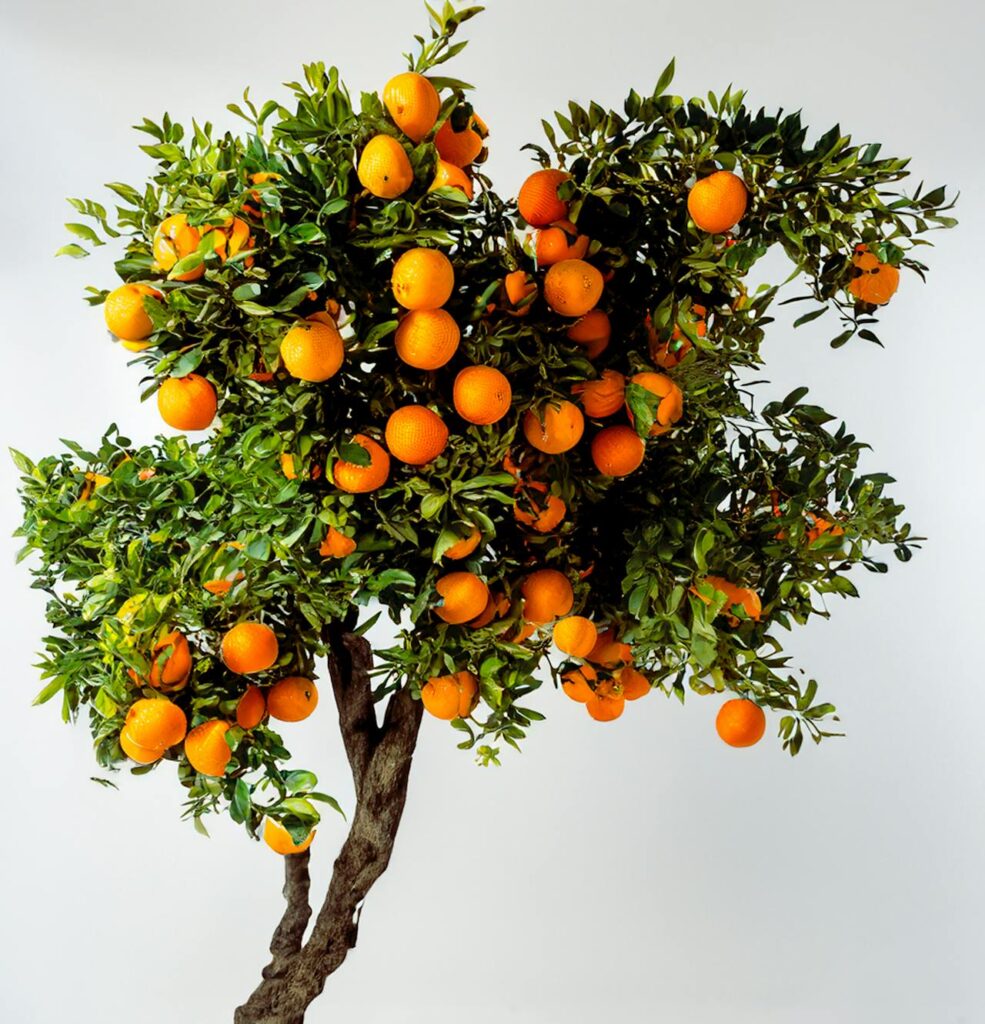
Introduction to the Washington Navel Orange Tree
The Washington Navel Orange Tree is a testament to nature’s ability to produce extraordinary fruit.
What is a Washington Navel Orange Tree?
A Washington Navel Orange Tree is a citrus variety (Citrus sinensis) known for producing sweet, seedless oranges. The oranges have a distinctive “navel”. These trees produce fruits that are:
- Completely seedless
- Exceptionally sweet
- Large and easy to peel
- Perfect for fresh eating
Historical Origins
The Washington Navel Orange Tree has a history that traces back to Brazil. The USDA imported these orange trees from Bahia, Brazil in 1870. They were distributed to agricultural experiment stations. The trees were named after Washington, D.C.
Popularity Among Gardeners
Why have Washington Navel Orange Trees become so popular? The reasons are compelling:
- Exceptional Fruit Quality: Unparalleled sweetness and minimal seeds
- Adaptability: Grows well in various climates
- Ornamental Value: Beautiful evergreen tree with glossy leaves
- Relatively Low Maintenance: Compared to other fruit trees
- Consistent Fruit Production: Reliable yearly harvests
Key Characteristics
- Scientific Name: Citrus sinensis
- Origin: Brazil
- Fruit Type: Seedless navel orange
- Tree Size: Medium (15-20 feet tall)
- Hardiness Zones: 9-11
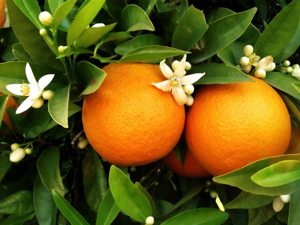
What Makes the Washington Navel Orange Unique?
Distinctive Fruit Characteristics
Washington Navel Oranges are immediately recognizable by their:
- Navel Formation: A small secondary fruit at the blossom end, resembling a human navel
- Large, uniform fruit size (3-4 inches in diameter)
- Bright orange, thick and bumpy peel
- Exceptionally sweet, low-acid flavor profile
Flavor Profile and Culinary Versatility
The flavor of Washington Navel Oranges is unparalleled, characterized by:
- Intense sweetness
- Low acidity
- Rich, complex citrus notes
- Minimal seeds, making them ideal for:
- Fresh eating
- Juicing
- Baking
- Salad garnishes
- Marmalades and preserves
Genetic Background
Genetic Uniqueness:
- Mutation of the Selecta orange variety
- Reproduces through grafting, not seeds
- Sterile variety (cannot self-pollinate)
- Requires specialized propagation techniques
Nutritional Highlights
Washington Navel Oranges are nutritional powerhouses, offering:
- Vitamin C: 70-100% of daily recommended intake per fruit
- Antioxidants
- Dietary fiber
- Low calorie count (approximately 60-70 calories per orange)
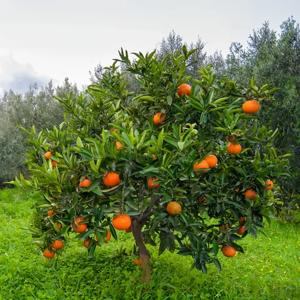
Botanical Characteristics of the Washington Navel Orange Tree
Scientific Classification
- Kingdom: Plantae
- Family: Rutaceae
- Genus: Citrus
- Species: Citrus sinensis
Growth Habits
- Growth Rate: Moderate (1-2 feet per year)
- Lifespan: 50-100 years with proper care
- Productive Years: 15-50 years
- Canopy Development: Rounded, requires minimal shaping
Environmental Adaptation
The tree demonstrates adaptability, thriving in:
- Mediterranean climates
- Subtropical regions
- Areas with consistent temperatures
- Zones with minimal frost exposure
Climate and Growing Conditions for Washington Navel Orange Trees
Ideal Growing Zones
The Washington Navel Orange Tree thrives in specific conditions:
- USDA Hardiness Zones: 9-11
- Optimal regions:
- Southern California
- Arizona
- Florida
- Parts of Texas
- Mediterranean-like climates worldwide
Temperature Requirements
Temperature Tolerance:
- Ideal Range: 55-90°F (12-32°C)
- Minimum Survival Temperature: 28°F (-2°C)
- Optimal Growth Temperature: 70-85°F (21-29°C)
Temperature Sensitivity
- Vulnerable to prolonged freezing conditions
- Requires protection during frost events
- Young trees are susceptible to cold damage
Sunlight Needs
Sunlight Requirements:
- Minimum: 6-8 hours of direct sunlight daily
- Ideal Exposure: Full sun
- Placement: Southern or southwestern-facing locations
- Canopy Protection: Partial shade during afternoon heat
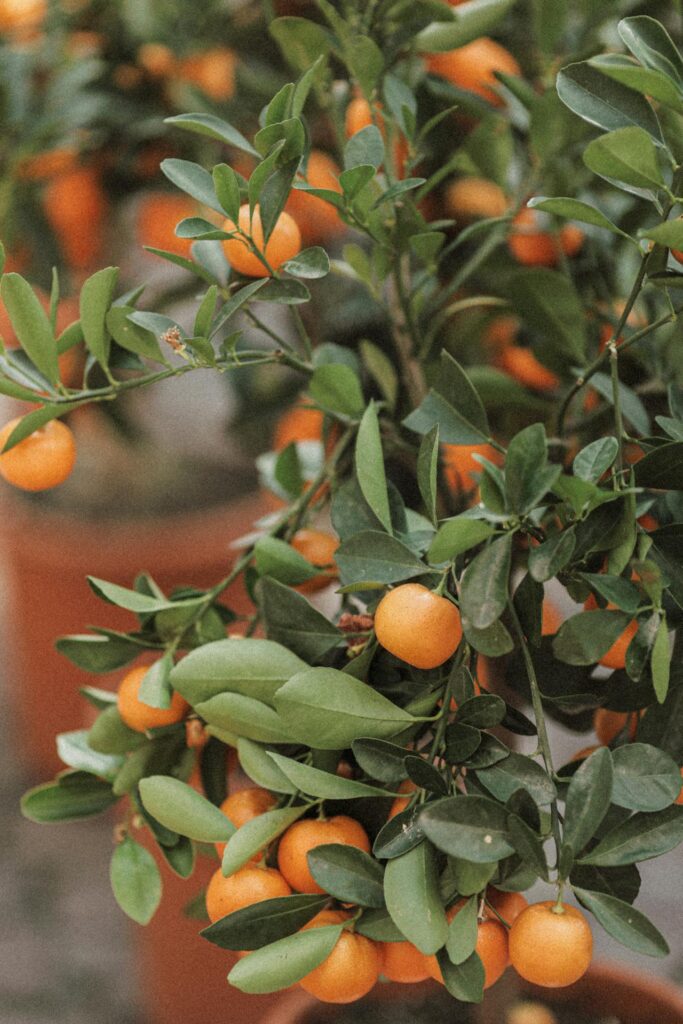
Soil Preferences
Ideal Soil Characteristics:
- pH Range: 6.0-7.5 (acidic to neutral)
- Well-draining soil
- Rich in organic matter
- Loamy texture
- Good nutrient retention
Soil Composition Recommendations
- 60% loam
- 20% sand
- 20% organic compost
- Avoid heavy clay or waterlogged soils
Hardiness and Adaptability
Environmental Adaptations:
- Moderate wind tolerance
- Drought-resistant once established
- Can tolerate mild salt exposure
- Adaptable to container growing
Microclimate Considerations
Washington Navel Orange Tree cultivation depends on:
- Wind protection
- Consistent temperature
- Adequate air circulation
- Minimal frost exposure
- Proper humidity levels (40-60%)
Planting Your Washington Navel Orange Tree
Selecting the Right Location
Choosing the spot for your Washington Navel Orange Tree is important for its health. The location will impact everything from soil, sunlight, and tree development.
Soil Preparation
Key Soil Preparation Steps:
- Conduct a soil pH test before planting
- Ensure excellent drainage
- Add organic matter (compost, aged manure)
- Remove rocks and debris
- Create a raised planting area if drainage is poor
Sunlight Considerations
- Minimum Sunlight: 6-8 hours of direct sunlight
- Ideal locations:
- South-facing areas
- Open spaces with minimal shade
- Areas protected from strong winds
- Avoid locations near large buildings or dense tree cover
Spacing Requirements
Planting Distances:
- Tree to Tree: 15-20 feet apart
- From Structures: Minimum 10 feet
- From Other Fruit Trees: 12-15 feet
- Allows for:
- Proper air circulation
- Comprehensive root development
- Ease of maintenance and harvesting

Planting Step-by-Step Guide
Best Planting Time
Optimal Planting Seasons:
- Early spring
- Late fall in warmer climates
- Avoid extreme heat or cold periods
- Soil temperature should be 60-70°F
Proper Planting Techniques
- Dig the Hole
- 2-3 times wider than the root ball
- Depth equal to root ball height
- Loosen surrounding soil
- Prepare the Tree
- Remove it from the container
- Inspect and untangle roots
- Trim any damaged roots
- Planting Process
- Place the tree in the hole
- Ensure graft union is above the soil line
- Backfill with native soil mixed with compost
- Yamp down to remove air pockets
- Initial Watering
- Water after planting
- Create a water basin around the tree
- Add 2-3 inches of mulch (avoiding trunk contact)
Container Planting Alternative
For those with limited space or challenging climates:
- Use large containers (15-25 gallons)
- Ensure drainage holes
- Use citrus-specific potting mix
- Move indoors during the frost
- Provide consistent care
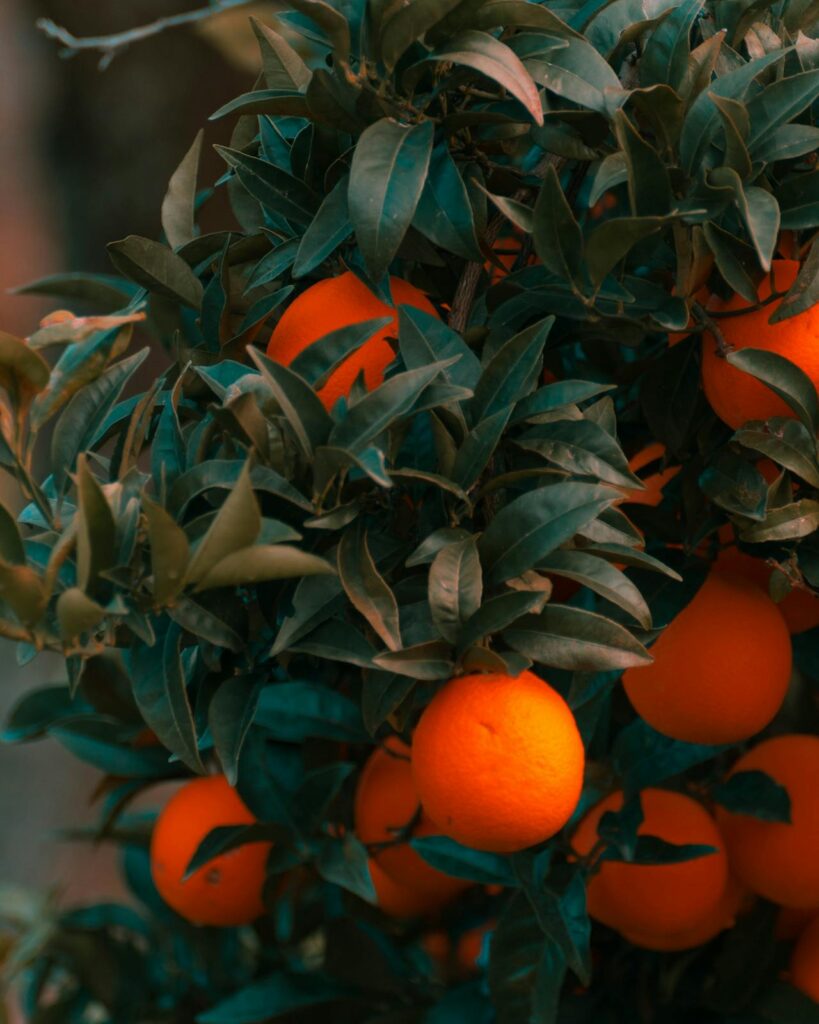
Irrigation and Water Management for Washington Navel Orange Trees
Proper irrigation is important for healthy growth, fruit production, and tree longevity.
Water Requirements
Precise Water Needs:
- Young Trees: 1-2 gallons per day
- Mature Trees: 10-15 gallons per week
- Peak Summer: Increased water demand
- Winter: Reduced irrigation requirements
Water Consumption Factors
- Tree age
- Soil type
- Climate conditions
- Seasonal variations
- Humidity levels
Frequency of Watering
Watering Guidelines:
- Young Trees (1-3 years):
- Twice weekly
- Deep, thorough watering
- Avoid surface-level sprinkling
- Established Trees:
- Once per week
- Deep root zone irrigation
- Adjust based on rainfall
Drainage Considerations
Optimal Drainage Characteristics:
- Well-draining soil
- Avoid water-logged conditions
- Raised planting areas
- Mulching to keep moisture
Drainage Red Flags
- Standing water
- Yellowing leaves
- Root rot
- Fungal growth
- Stunted growth
Signs of Over or Under-Watering
Over-Watering Symptoms:
- Yellowing leaves
- Soft, mushy roots
- Fungal growth
- Leaf drop
- Reduced fruit production
Under-Watering Symptoms:
- Leaf curl
- Premature fruit drop
- Dry, brittle branches
- Reduced fruit size
- Leaf browning
Irrigation Methods
Recommended Techniques:
- Drip Irrigation
- Precise water delivery
- Minimal water waste
- Consistent moisture
- Soaker Hoses
- Even water distribution
- Low-pressure application
- Reduces water contact with leaves
- Basin Irrigation
- Create a circular basin around the tree
- Slow, deep watering
- Mimics natural water absorption
Water Quality Considerations
Important Water Factors:
- pH level (6.0-7.5 ideal)
- Low salt content
- Minimal chlorine
- Free from heavy metals
Seasonal Watering Adjustments
Seasonal Watering Guide:
- Spring: Increase frequency
- Summer: Maximum water demand
- Fall: Gradual reduction
- Winter: Minimal irrigation
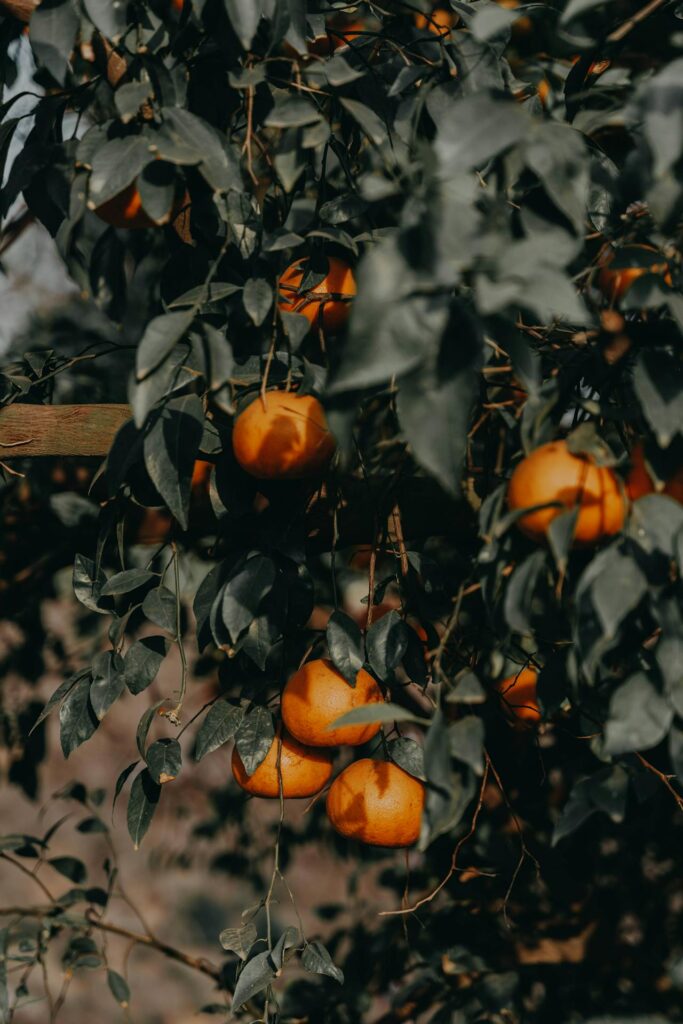
Fertilization Strategies for Washington Navel Orange Trees
Nutrient Requirements
The Washington Navel Orange Tree demands a balanced nutritional approach to ensure growth. Understanding its nutrient needs is important for tree health.
Primary Macronutrients
- Nitrogen (N): Leaf and branch growth
- Phosphorus (P): Root development and flowering
- Potassium (K): Fruit quality and tree resilience
Secondary Nutrients
- Calcium
- Magnesium
- Sulfur
Best Fertilizer Types
Recommended Fertilizer Formulations:
- Citrus-Specific Fertilizers
- Balanced NPK ratios (6-6-6 or 8-8-8)
- Slow-release formulations
- Contains micronutrients
- Organic Options
- Compost
- Aged manure
- Fish emulsion
- Bone meal
- Seaweed extracts
Application Schedules
Fertilization Timeline:
- Young Trees (1-3 years):
- Light, frequent applications
- Quarterly fertilization
- Reduce nitrogen concentration
- Mature Trees (4+ years):
- 3-4 times per year
- Spring, early summer, late summer
- Reduced winter applications
Micronutrient Needs
Critical Micronutrients:
- Iron
- Zinc
- Manganese
- Boron
- Copper
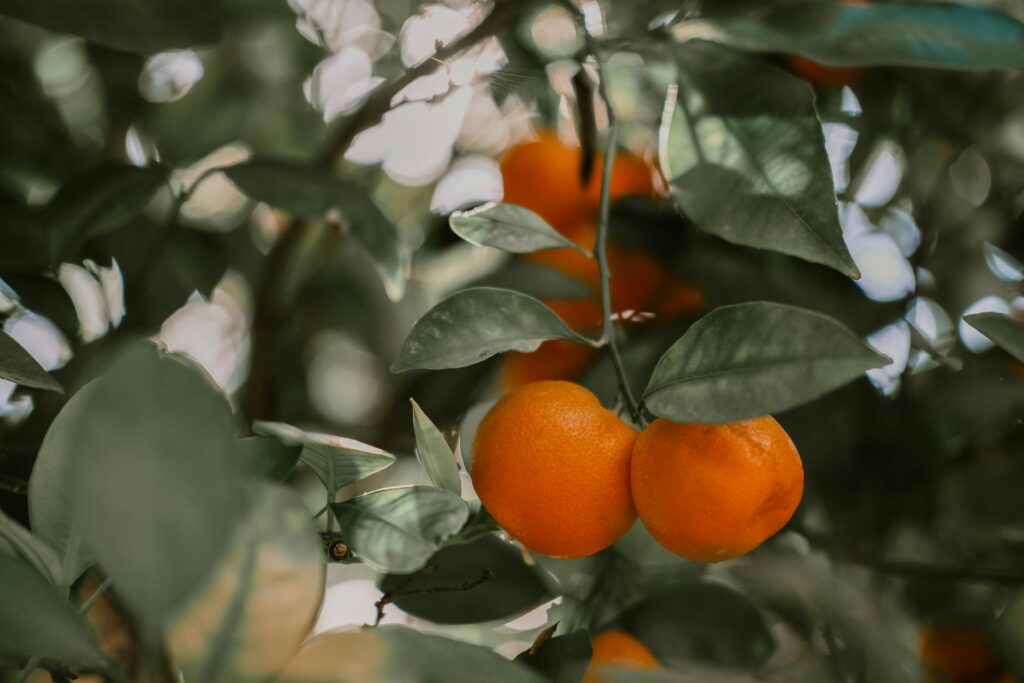
Micronutrient Deficiency Signs
- Yellowing leaves
- Reduced fruit set
- Stunted growth
- Leaf discoloration
- Unusual fruit development
Application Techniques
Fertilization Best Practices:
- Spread fertilizer
- Avoid direct trunk contact
- Water after application
- Use mulch to keep nutrients
- Soil test every 2-3 years
Organic vs. Synthetic Fertilizers
Comparison:
- Organic Fertilizers:
- Slow-release
- Improves soil structure
- Environmentally friendly
- Less precise nutrient control
- Synthetic Fertilizers:
- Immediate nutrient availability
- Precise nutrient ratios
- Quick results
- Potential salt buildup
Soil pH Considerations
Optimal pH Range: 6.0-7.5
- Affects nutrient availability
- Influences root absorption
- Impacts tree health
Common Fertilization Mistakes
Avoid:
- Over-fertilization
- Inconsistent application
- Ignoring soil pH
- Using the wrong nutrient ratios
- Neglecting micronutrients

Pruning and Maintenance of Washington Navel Orange Trees
When and How to Prune
Pruning the Washington Navel Orange Tree will impact tree health. Proper techniques can enhance the tree’s productivity and longevity.
Optimal Pruning Periods
- Primary Pruning Season: Late winter to early spring
- Avoid: Pruning during flowering or fruit set
- Best Time: Before new growth begins
Pruning Objectives
Key Pruning Goals:
- Improve air circulation
- Remove dead or diseased branches
- Maintain optimal tree shape
- Enhance sunlight penetration
- Promote fruit production
Shaping the Tree
Young Tree Pruning (1-3 Years)
- Establish a primary branch structure
- Create a strong central leader
- Remove competing branches
- Develop wide, open canopy
Mature Tree Pruning
- Maintain tree height
- Thin out dense interior branches
- Remove crossing or rubbing limbs
- Maintain tree shape
Pruning Techniques
Essential Pruning Methods:
- Thinning Cuts
- Remove the entire branch at the point of origin
- Improves light penetration
- Reduces branch crowding
- Heading Cuts
- Shortens branches
- Encourages new growth
- Controls tree size
- Renewal Pruning
- Removes older, unproductive branches
- Stimulates new fruit-bearing wood
Tools and Equipment
Recommended Pruning Tools:
- Sharp, clean pruning shears
- Long-handled loppers
- Pruning saw
- Disinfectant solution
- Protective gloves
- Safety glasses

Removing Dead or Diseased Branches
Identification and Removal:
- Look for:
- Discolored bark
- Brittle branches
- Signs of pest damage
- Fungal growth
- Unusual swellings
Removal Process:
- Make clean cuts
- Cut close to the branch collar
- Disinfect tools between cuts
- Dispose of diseased material
Pest and Disease Management for Washington Navel Orange Trees
Common Pests Affecting Washington Navel Orange Trees
The Washington Navel Orange Tree faces pest challenges that compromise tree health. Understanding these threats is important for effective management.
Primary Citrus Pests
- Citrus Aphids
- Tiny, soft-bodied insects
- Feed on tree sap
- Transmit viral diseases
- Cause leaf distortion
- Scale Insects
- Hard or soft shell
- Attach to branches and leaves
- Suck plant nutrients
- Produce honeydew attracting sooty mold
- Citrus Leafminers
- Larvae create serpentine tunnels in leaves
- Reduce photosynthesis
- Weaken tree’s health
- Spider Mites
- Microscopic arachnids
- Thrive in hot, dry conditions
- Cause stippling on leaves
- Reduce tree vigor
- Citrus Whiteflies
- Small, white-winged insects
- Feed on leaf undersides
- Produce honeydew
- Attract secondary infections
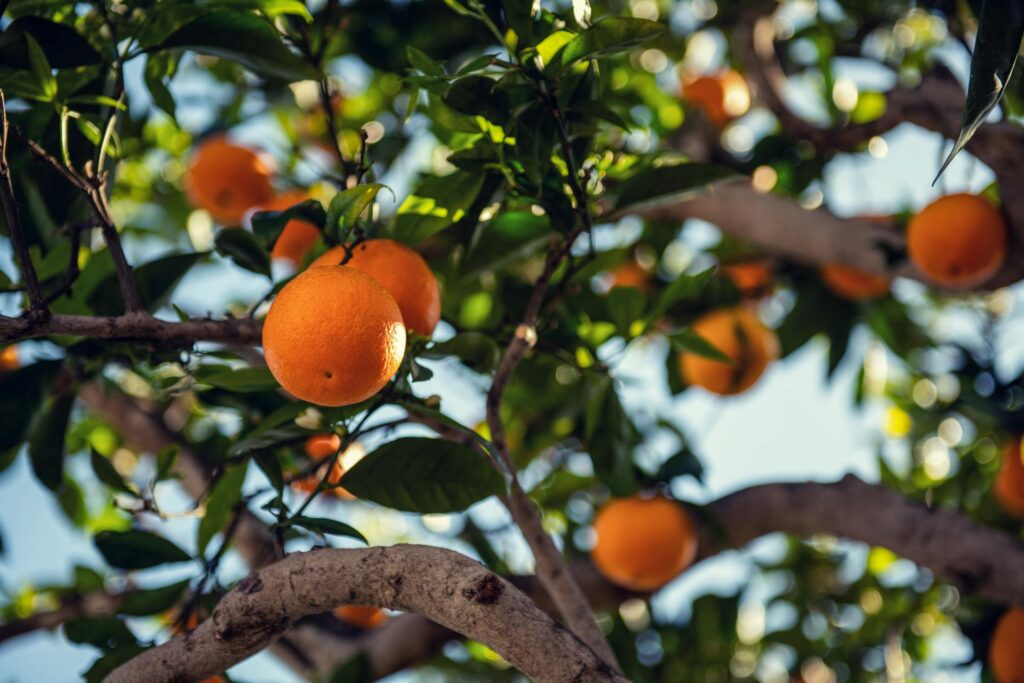
Identification and Prevention Strategies
Early Detection Techniques:
- Regular visual inspections
- Use of sticky traps
- Monitoring leaf undersides
- Checking branch junctions
- Tracking seasonal pest patterns
Organic Control Methods
Natural Pest Management:
- Beneficial Insects
- Ladybugs
- Lacewings
- Parasitic wasps
- Predatory mites
- Horticultural Oils
- Suffocate soft-bodied insects
- Minimal environmental impact
- Safe for beneficial insects
- Neem Oil Treatments
- Natural pesticide
- Disrupts insect breeding
- Reduces pest populations
- Companion Planting
- Marigolds
- Nasturtiums
- Herbs like mint and basil
- Repel harmful insects
Chemical Control Methods
Synthetic Pesticide Options:
- Systemic insecticides
- Contact pesticides
- Targeted treatments
- Professional-grade solutions
Common Diseases
Fungal Diseases
- Citrus Canker
- Bacterial infection
- Causes lesions on fruits, leaves
- Reduces fruit quality
- Can lead to significant tree damage
- Phytophthora Root Rot
- Soil-borne pathogen
- Attacks root system
- Causes yellowing
- This leads to tree decline
- Alternaria Brown Spot
- Fungal infection
- Creates dark, sunken lesions
- Impacts the fruit and leaf health
Viral Diseases
- Tristeza virus
- Citrus stubborn disease
- Exocortis
Disease Prevention Strategies
Proactive Management:
- Use disease-resistant rootstocks
- Maintain proper tree nutrition
- Ensure good drainage
- Control insect populations
- Practice strict sanitation
- Avoid overhead irrigation
Treatment Approaches
- Cultural Controls
- Prune infected branches
- Remove diseased fruit
- Improve air circulation
- Maintain tree health
- Chemical Treatments
- Copper-based fungicides
- Systemic treatments
- Targeted disease interventions

Fruit Production and Harvesting for Washington Navel Orange Trees
Typical Fruit Yield
The Washington Navel Orange Tree is known for its fruit production.
Yield Expectations
- Young Trees (3-5 years): 20-50 fruits per season
- Mature Trees (6-10 years): 100-300 fruits yearly
- Established Trees (10+ years): 300-600 fruits per season
- Factors Affecting Yield:
- Tree health
- Growing conditions
- Pruning practices
- Fertilization
- Climate
Fruit Development Stages
Growth Progression:
- Flowering Stage
- Occurs in early spring
- White, fragrant blossoms
- Attracts pollinators
- Lasts 2-3 weeks
- Fruit Set
- Small green fruits develop
- Initial size: 1/4 inch
- Some fruit drop is normal
- Growth Phase
- Fruits expand quickly
- Color begins to change
- Nutrients concentrate
- Maturation
- Fruits reach full size
- The color deepens to bright orange
- Sugar content increases
Signs of Fruit Maturity
Ripeness Indicators:
- Bright, uniform orange color
- Soft when gently squeezed
- Sweet aroma
- Typical size of 3-4 inches
- Easy separation from branch
- Rich, heavy feel
Harvesting Techniques
Best Harvesting Practices:
- Hand-picking
- Gentle twist and pull
- Avoid damaging branch
- Use pruning shears if needed
- Timing Considerations
- Harvest when fully ripe
- Usually late fall to early winter
- November-January
- Varies by local climate
Nutrition Snapshot (per medium orange):
- Calories: 70
- Vitamin C: 100% daily value
- Fiber: 3 grams
- Natural sugars: 12 grams
- Antioxidants
- Zero fat

Propagation Methods for Washington Navel Orange Trees
Overview of Propagation Techniques
Propagating Washington Navel Orange Trees requires specialized techniques due to the tree’s genetics. These oranges cannot be reliably grown from seeds. They demand sophisticated reproduction methods.
Seed Propagation
Limitations of Seed Propagation:
- Challenges:
- Trees grown from seeds are not true to parent variety
- Produce different fruit characteristics
- Slow to fruit (7-10 years)
- Genetically unstable
- Often produce inferior fruit
Not Recommended for Washington Navel Orange Trees
Grafting Techniques
Primary Grafting Methods
- Budding
- The most common propagation technique
- Involves inserting a bud from a desired variety
- Grafted onto robust rootstock
- High success rate
- Maintains genetic integrity
- Whip Grafting
- Joins young stem sections
- Requires precise cutting
- Done in early spring
- Requires skilled technique
Common Challenges and Solutions for Washington Navel Orange Trees
Addressing Yellowing Leaves
Yellowing leaves can indicate health issues for Washington Navel Orange Trees. Understanding the causes helps to diagnose and resolve problems.
Primary Causes of Yellowing
- Nutrient Deficiencies
- Nitrogen Deficiency
- Uniform yellowing of older leaves
- Stunted growth
- Pale green to yellow coloration
- Iron Chlorosis
- Yellowing between leaf veins
- Younger leaves most affected
- Common in alkaline soils
- Magnesium Deficiency
- Yellow patches between leaf veins
- Older leaves show symptoms first
- Leaf edges may turn brown
- Nitrogen Deficiency
- Watering Issues
- Overwatering
- Soggy soil
- Root rot potential
- Reduced oxygen absorption
- Underwatering
- Dry, crisp leaf edges
- Leaf curl
- Premature leaf drop
- Overwatering
- Environmental Stress
- Temperature extremes
- Sudden climate changes
- Transplant shock
- Excessive sun exposure
Fruit Drop Issues
Common Reasons for Fruit Drop:
- Environmental Stress
- Extreme temperatures
- Drought conditions
- Sudden humidity changes
- Nutritional Imbalances
- Insufficient fertilization
- Micronutrient deficiencies
- Inconsistent feeding
- Pest Infestations
- Citrus psyllids
- Scale insects
- Mite populations
Washington Navel Orange in Culinary Applications
The Washington Navel Orange stands as a culinary superstar. It offers fresh eating to complex culinary creations. These oranges bring flavor and nutrition to the table.
Nutritional Benefits
Nutritional Profile (per medium orange):
- Calories: 60-70
- Vitamin C: 100% daily recommended intake
- Dietary Fiber: 3 grams
- Natural Sugars: 12 grams
- Antioxidants: High concentration
- Minerals: Potassium, calcium
- Zero fat
- Low glycemic index
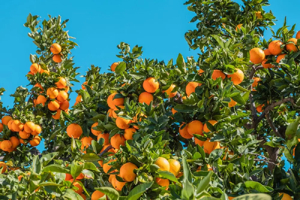
Conclusion: Embracing the Washington Navel Orange Tree
The Washington Navel Orange Tree represents a testament to horticultural excellence. It is a remarkable addition to gardens, landscapes, and culinary experiences.
Key Takeaways
Remarkable Attributes:
- Exceptional fruit quality
- Ornamental landscape value
- Nutritional powerhouse
- Adaptable growing requirements
- Rich historical significance
Why Choose a Washington Navel Orange Tree?
- Unparalleled Fruit
- Seedless oranges
- Exceptional sweetness
- Easy to peel
- Consistent quality
- Landscape Enhancement
- Evergreen beauty
- Year-round visual interest
- Functional and aesthetic
- Nutritional Benefits
- High vitamin C
- Natural antioxidants
- Low-calorie fruit
- Versatile culinary applications
